October 27, 2021
Seed samples from genebanks in Serbia and Latvia were brought into the Seed Vault for the first time during this year’s last deposit. Additional seed samples were sent from large parts of the world. A broad diversity of crops was represented in the seed boxes, cereals, corn, herbs and several species of African forages.
Earlier this week, 50 boxes with 14 011 seed samples were brought into Svalbard Global Seed Vault. A total of 12 genebanks participated. Two of these deposited seeds for the first time and were also represented by delegations on site – for the first time since the covid pandemic began to make traveling difficult. The Institute of Field and Vegetable Crops (IFVCNS) from Serbia deposited 96 seed samples, most of which were different wheat species. The first Serbian deposit was supported by the International Treaty on Plant Genetic Resources for Food and Agriculture.
Traditional Crops from Latvia
The other new depositor is the Genetic Resource Center/LMVI ’Silava’, which is based in Latvian Riga. The center has been working for three years to regenerate the seed samples sent to Svalbard. 153 seed samples of 30 different species were safety duplicated, most of the crops have been of great importance to the country.
“The seed samples being sent to Svalbard are all varieties that have been developed in Latvia, and represent crops that are agriculturally and culturally important for Latvia. Barley, flax and wheat making up over half of the number of deposited seed samples,” says Dainis Ruņģis, genebank manager at ’Silava’.
“From the perspective of Latvian cuisine, of course we also have grey peas, dill and caraway in this deposit.”
Representatives from the Latvian Ministry of Agriculture were also present when the seed samples from the new depositors were brought into the Vault.
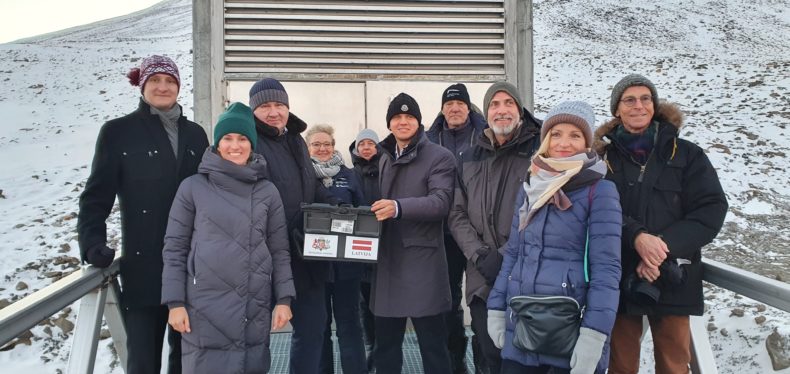 Parts of the delegation from Latvia.
Parts of the delegation from Latvia.
“The conservation and sustainable use of genetic diversity is crucial to meet the challenges of adapting to climate change. Depositing seeds in Svalbard guarantees their safety and shows that the entire world can work to reach a common goal of conserving precious genetic resources,” says Kristine Sirma, the Latvian Ministry’s head of Sustainable Agriculture Development Division.
Representatives from NordGen attended the deposit to meet with delegations from Latvia and Serbia together with representatives from the Norweigan Ministry of Agriculture and Food.
“We are very happy to welcome two new genebanks by this deposit. It is important to ensure a wide range of genetic diversity, so it is also gratifying that several new species now are entering the Seed Vault for the first time,” says Lise Lykke Steffensen, NordGen’s executive director.
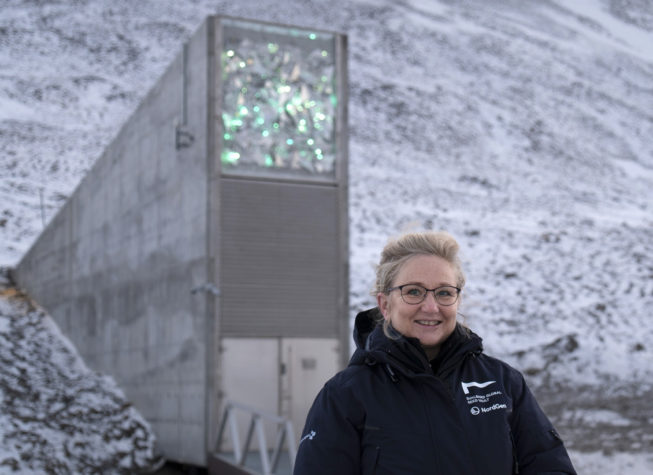 NordGens’s executive director, Lise Lykke Steffensen.
NordGens’s executive director, Lise Lykke Steffensen.
22 New Species in the Vault
The International Livestock Research Institute (ILRI) is headquartered in Nairobi but operates in a collaboration between Kenya and Ethiopia with 14 offices in Asia and Africa. The institute focuses on livestock work in developing countries, the conservation of forages is an important part. During the deposit, several new species entered the Vault, including various grass and legumes.
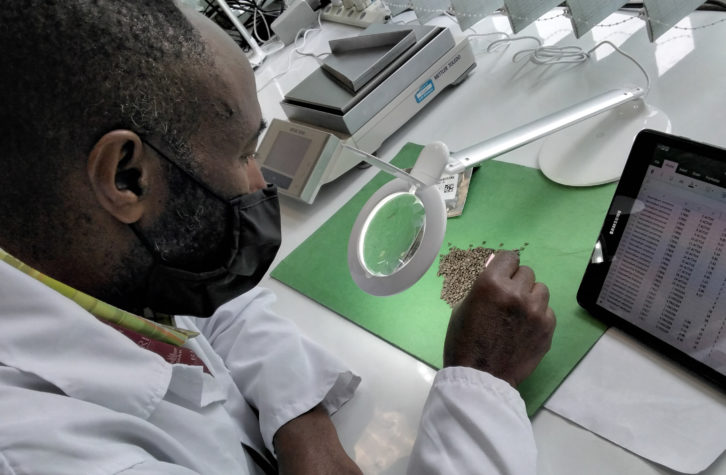 Seed preparation, photo: ILRI.
Seed preparation, photo: ILRI.
“22 species are safety duplicated up on Svalbard for the first time. Although our primary focus is conserving forages, some forage species have multiple uses. For example, the cowpea Vigna unguiculata is also used as a vegetable, says Alice Muchugi, ILRI’s genebank manager.
The Largest Depositor
Another institution that participated in the deposit was the International Wheat and Maize Improvement Center, CIMMYT, which is headquartered in Mexico and is known as the world’s largest genebank for maize and wheat. In the October deposit, CIMMYT had the largest number of seed samples (4051) and it is also the largest depositor in total. 177,850 seed samples of twelve species of wheat and maize from CIMMYT are now secured in the Seed Vault.
“Our goal is to send 90 percent of the collection by 2024. We are planning to send around 7,000 seed samples of wheat and 800 of corn annually,” says Rocío Quiroz Soto, Assistant Research Associate at CIMMYT.
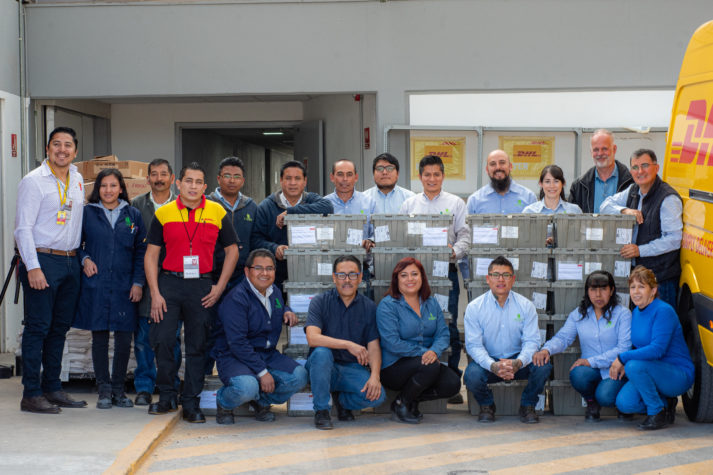 71 percent of CIMMYT’s wheat collection and 87 percent of the maize was already secured in the Seed Vault before this deposit. Archive photo from 2020, photo: CIMMYT.
71 percent of CIMMYT’s wheat collection and 87 percent of the maize was already secured in the Seed Vault before this deposit. Archive photo from 2020, photo: CIMMYT.
“Personally, I am very pleased to carry out this activity that contributes to the conservation of genetic resources and to guarantee the food security of two of the largest food crops in the world.”
This deposit coincides with the launch of a call for project proposals created by the Crop Trust in partnership with the Secretariat of the Plant Treaty, NordGen and the Norwegian Ministry of Food and Agriculture. The call will give genebanks in lower-income countries support to regenerate their crop collections and deposit them in the Seed Vault.
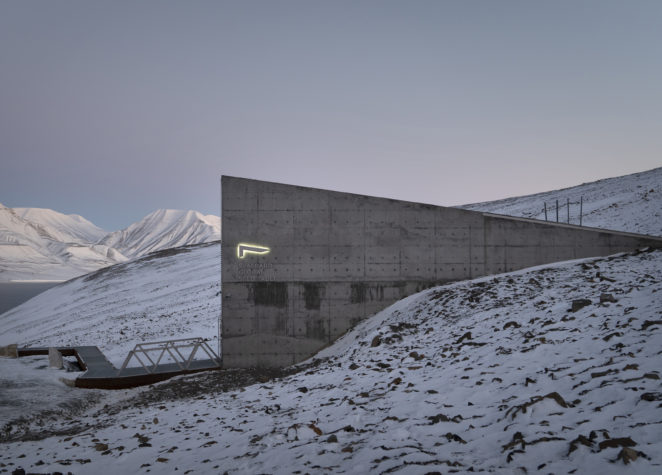 Svalbard Global Seed Vault.
Svalbard Global Seed Vault.
The October deposit means that there now are 1 125 416 seed samples stored in the Seed Vault. The next deposit is scheduled to be carried out in February 2022.
The Seed Vault is established and owned by Norway and operated in a partnership between the Norwegian Ministry of Agriculture and Food, NordGen – the Nordic countries’ gene bank, and the international organization Crop Trust.
Institutions That Contributed to the Seed Deposit in October:
- LMVI ‘Silava’, Genetic Resource Center, Latvia.
- Institute of Field and Vegetable Crops, IFVCNS, Serbia.
- John Innes Center, United Kingdom.
- World Agroforestry, ICRAF, Kenya.
- Austrian Agency for Health and Food Safety, AGES, Austria.
- The International Livestock Research Institute, ILRI, Kenya / Ethiopia.
- International Wheat and Maize Improvement Center, CIMMYT, Mexico.
- International Potato Center, CIP, Peru.
- SADC Plant Genetic Resource Center, SPGRC, Zambia.
- Rural Development Administration, RDA, South Korea.
- National Center for Plant Genetic Resources, IHAR, Poland.
- National Rice Seed Storage Laboratory for Genetic Resources, NRSSL, Thailand.